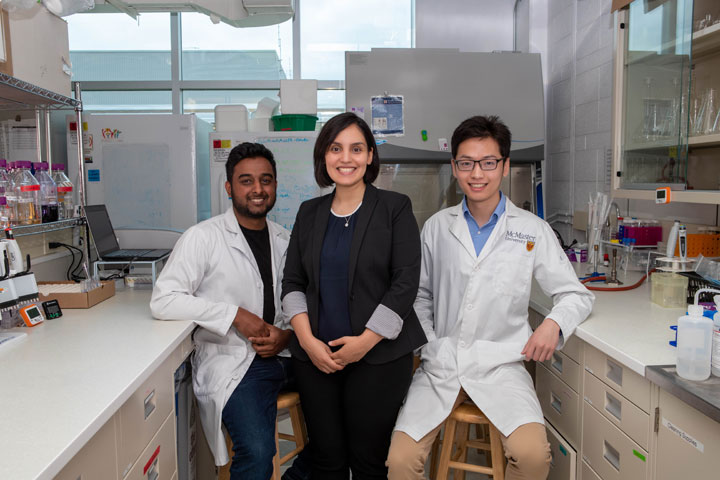A team of Ontario researchers say they’ve come up with a way to convert common types of viruses into a gel with potential for a wide variety of medical and environmental uses.

The scientists at Hamilton’s McMaster University say the gel is comprised of bacteriophages, or viruses found throughout the human body and surrounding environments that fight bacteria.
When formed into a gel, the phages showed the ability to emit light and heal itself when damaged.
The findings of the research are being published today in the journal Chemistry of Materials.
Lead author Zeinab Hosseini-Doust says a regenerative, bacteria-fighting gel has a variety of potential applications in everything from healing wounds to purifying tainted water.
She says one of the gel’s most promising features is the ability to target specific bacteria, a property she says could be particularly valuable in an age of growing antibiotic resistance.
“Antibiotics are not specific at all. They kill the good bacteria inside your gut, and the good bacteria are what we need to stay healthy,” Hosseini-Doust said in a telephone interview. “Bacteriophages are not like this. They can be very specific to their host.”

Get weekly health news
Hosseini-Doust said she and her other three co-authors focused primarily on developing the gel rather than testing its potential applications, but said the possibilities are already numerous.
She said the benefits of a naturally anti-bacterial gel are evident in products such as wound dressings, but said findings that evolved during the development process hint at other possibilities.
WATCH: Phage therapy – How a Canadian doctor used century-old medicine to save her dying husband from ‘super bug’

Hosseini-Doust said the gel showed a striking ability to heal itself and completely regenerate when researchers slashed it with a razor blade. Regardless of whether they hacked a piece right off the gel or simply left gashes in its surface, Hosseini-Doust said the substance was able to return to its original state with only limited scarring.
She said this capacity, combined with its properties as a soft and hydrated substance, give the gel striking similarities to human tissue and open the door for a variety of medical applications.
“Making a material that’s like the tissue in our bodies can take us a step closer to making implants and prosthetics that are more in tune with our tissue so they can be integrated better,” she said.
The gel is also naturally fluorescent, she said, meaning it could theoretically have uses in medical imaging.
Hosseini-Doust said another area of potential impact has to do with environmental cleanup.
“Because the gel is made out of bacteria eaters, the gel or a membrane or filter made out of the gel could filter out bacteria,” she said, noting it could be put to use in decontaminating water. “But this is only the tip of the iceberg.”
Hosseini-Doust said more study is required on a variety of fronts.
The gel produced by her research team is made up of one specific type of bacteriophage, she said, noting there are many others that have not yet been tested. Further study is necessary to see if those other types lend themselves to being concentrated into a similar gel form, she said.
Hosseini-Doust said more research is also required to test the various theoretical applications researchers are currently envisioning for their new discovery.

Comments